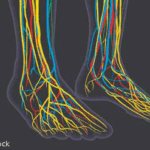
Search results for: fibromyalgia


How the Experts Treat Sjögren’s Disease
With no FDA-approved drugs for Sjögren’s disease, experts share strategies for managing fatigue, arthritis, dryness, and systemic issues.

Small Fiber Neuropathy: What the Rheumatologist Needs to Know
An expert on peripheral neuropathy shares his practical approach to the diagnosis & management of small fiber neuropathy

How to Recognize Inborn Errors of Immunity
Inborn errors of immunity may not always be easy to recognize, but rheumatologists should look out for them. Dr. Bharat Kumar shares his insights.

Cannabis for Pain Management in Rheumatology
‘Cannabis has a long history of being used for pain management,’ says Physician Editor Bharat Kumar, MD, MME, FACP, FAAAAI, RhMSUS. ‘What does it mean for rheumatology patients moving forward? Read our article for one answer to this question.’ As cannabis becomes more widely legalized, both in the U.S. and internationally, its use for pain…

In the Details: Diagnosing PsA Requires Drilling Down
Rheumatologists must do some detective work into a patient’s signs and symptoms when considering a psoriatic arthritis diagnosis, according to Philip J. Mease, MD, MACR

Under Pressure: Understanding Dysautonomia & POTS
Brit Adler, MD, provided a detailed analysis into the symptoms and management of patients with postural orthostatic tachycardia syndrome.

Top Research in Rheumatoid Arthritis Presented at ACR Convergence 2024
Why this research is relevant to clinicians today & researchers in the future WASHINGTON, D.C.—The ACR Convergence 2024 meeting in Washington, D.C., reflected the continued advancement of science and practical research in the field of rheumatoid arthritis. Highlights this year centered on new RA treatments and new uses of existing treatments; the use of artificial…

Key Research in Axial Spondyloarthritis Encapsulated
Our understanding of (axSpA) has really changed, especially with regard to male-female differences. In this report, we identify important research on axSpA presented at ACR Convergence 2024, summarize the abstracts and comment on why each is important, addressing the relevance for clinicians and the potential impact on future research.

Top Research in Psoriatic Arthritis Presented at ACR Convergence 2024
Editor’s note: What research on psoriatic arthritis (PsA) presented at ACR Convergence 2024 has the greatest potential for a positive impact on clinical care, treatment options or serve as the basis for future research? That’s the question The Rheumatologist asked David S. Pisetsky, MD, PhD—our founding editor—to consider. Dr. Pisetsky, a professor of medicine and immunology…
- « Previous Page
- 1
- …
- 4
- 5
- 6
- 7
- 8
- …
- 33
- Next Page »